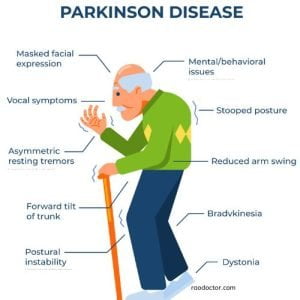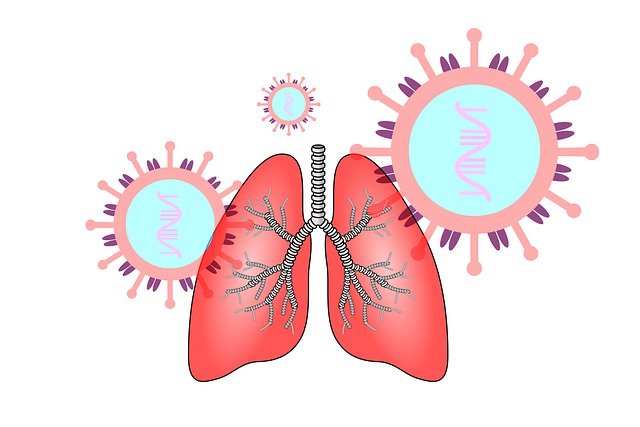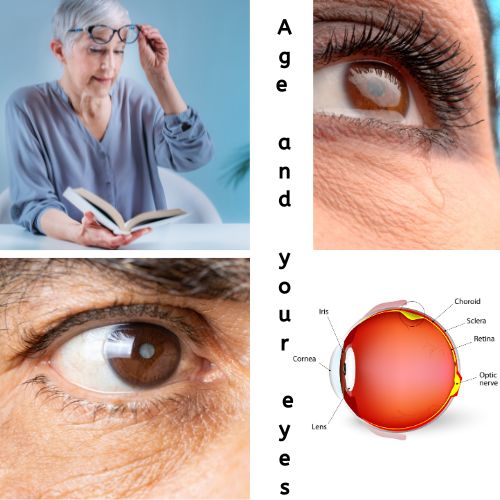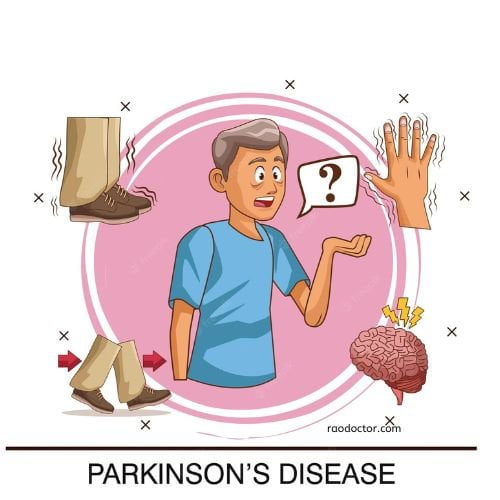
Parkinson’s Disease: Everything You Need to Know and How to Manage It
After the diagnosis of Parkinson’s Disease, it’s hard to know where to begin. But there is good news: symptoms of Parkinson’s disease are treatable and preventable.
Famous people who have had it include Michael J. Fox, Muhammad Ali, Alan Alda, past US president George HW Bush and Neil Young.
Let’s look into the details of what we know about Parkinson’s Disease, how it can affect you if you get it, how to manage it and everything in between.
Table of Contents
Listen to this article-
What is Parkinson’s disease?
In the year 2020, I wrote in detail about Dementia 1 2 3 and had made a mention of Parkinson’s Disease [PD] as a sequela to Alzheimer’s. In this article, we will learn about PD.
Parkinson’s disease is a disease of the central nervous system. The nervous system is responsible for controlling all of the automatic processes in your body, like your heartbeat, breathing, your mechanical actions, talking and many more functions of various organs in your body.
Parkinson’s disease usually starts when dopamine-producing cells in the brain die off. Dopamine is a naturally occurring chemical in your body that helps control movement.
If a person has Parkinson’s disease, that person does not produce enough dopamine. Dopamine is also essential for good mental function, so when dopamine levels drop, a person can experience trouble thinking clearly and short-term memory loss.
Parkinson’s disease can also cause rigid muscles, shaking and an inability to move.
How does Parkinson’s affect your body?
Parkinson’s disease affects your body in a few different ways. It usually impacts your muscles, but it also affects your thinking process, your senses and your sleep cycle.
Muscle rigidity, tremor and impaired movement are caused by a lack of dopamine. Dopamine is a neurotransmitter that helps your brain control movement. Parkinson’s disease causes a drop in the amount of dopamine in your brain.
Parkinson’s disease also impacts your senses, particularly your sense of smell. Normally, your sense of smell helps you experience the world around you. Parkinson’s disease can hinder your sense of smell, though, leaving you with a reduced sense of smell.
Lastly, Parkinson’s disease can impact your sleep cycle. As an essential neurotransmitter, dopamine plays a role in your sleep cycle. When you have Parkinson’s disease, though, you may have trouble sleeping due to dopamine levels in the brain.
What are the symptoms of PD?
Parkinson’s disease comes with many symptoms. The picture below shows most of the symptoms. However, many more symptoms surface as the disease progresses.
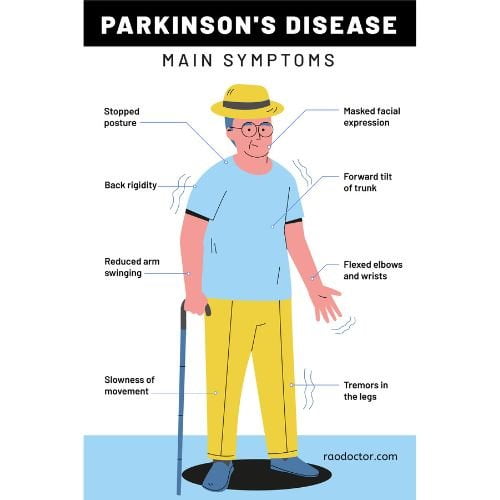
- Parkinsonian tremor – The hallmark of Parkinson’s is a shivering or shaking in one or more limbs, usually the hands. This is called “Parkinsonian tremor”.
- Slow movement – A person with Parkinson’s may appear to move very slowly because the disease affects muscle function.
- Impaired balance – When dopamine levels fall, it affects a person’s muscle tone. This can cause a person to experience poor balance and “freezing” when walking, so they cannot move.
- Rigidity – Some people with Parkinson’s experience stiffness in their muscles. Movement is harder because their muscles are not as flexible as they should be.
- Constipation – A common side effect of certain medications used to treat Parkinson’s disease is constipation, which can be painful and annoying.
- Bluish skin (a.k.a. cyanosis) – This symptom is a result of poor blood flow to certain parts of the body.
- Changes in mood – Depression and anxiety are common issues in people with Parkinson’s.
How is Parkinson’s diagnosed?
Before a doctor diagnoses you with Parkinson’s, they will rule out other conditions that may cause similar symptoms.
If your doctor thinks you might have Parkinson’s, he or she will probably refer you to a neurologist for more testing. The results of these tests may lead your doctor to a Parkinson’s diagnosis or to another diagnosis. There is no single test for Parkinson’s, so a doctor will usually use several tests and look for the presence of certain signs and symptoms.
If your doctor thinks you have Parkinson’s, he or she may recommend having a PET scan, an MRI or an EEG [electroencephalography].
Can you prevent Parkinson’s?
Like most diseases, scientists have yet to determine a single cause of Parkinson’s, which makes preventing the disease tricky. Researchers have found a few things that may lower your risk of developing Parkinson’s.
These include maintaining a healthy diet, staying active and limiting your caffeine intake. Most importantly, you should see your doctor regularly, especially if you have a family history of Parkinson’s.
Your doctor can do tests to look for early signs of the disease and help you manage any risk factors you may have.
Is there a cure for Parkinson’s Disease?
Unfortunately, there is no cure for Parkinson’s disease. However, there are effective treatments for this disorder, and most people are able to manage their symptoms well enough to lead a normal and productive life. Doctors usually prescribe a combination of medicines, along with physical therapy, to treat symptoms and manage the progression of Parkinson’s disease.
Managing PD with medication and physical therapy
Medication and physical therapy are the mainstays of treatment of PD. Read on
Medication –
A doctor may prescribe PD medication to help replace the dopamine that your body is no longer producing. Certain medications can reduce symptoms, slow disease progression and help you manage your day-to-day activities.
There are several types of medications used to treat Parkinson’s disease. here is a list of some commonly used medicines with their dosage-
-Levodopa [Syndopa]: 10-100 mg orally 3 to 4 times daily
-Carbidopa/Levodopa [Syndopa Plus]: 10/100 mg orally 3 to 4 times daily
-Entacapone [Entacom]: 200 mg orally up to 4 times daily
-Rasagiline [Rasalect/Relgin]: 0.5 to1 mg orally once daily
-Selegiline [Selgin]: 5 to 10mg orally once daily
-Amantadine [Amantrel, Parkitidin]: 100 mg orally 2 to 3 times daily
-Pramiprazole [Pramipex]-0.125 mg 3 times a day
-Rotigotine [Neupro]- 1-4 mg per day, applied transdermally
-Ropinirole [Ropark]– 0.25 t0 4mg 2 to 3 times a day
It’s important to work with your doctor to determine which medications are right for you. All these medicines can be bought online in India by clicking the highlighted links and uploading a prescription from your Neurologist/treating doctor.
Physical therapy –
Physical therapy can help you learn to manage your symptoms. Therapists can help you develop strategies to reduce your risk of falling and improve your balance. They can also help you learn ways to reduce stress and stay as healthy as possible.
Useful Resource-
Bottom line
Parkinson’s disease is a degenerative neurological disorder that affects millions of people worldwide.
While there is currently no cure for Parkinson’s, there are treatments that can help slow down or even stop the progression of the disease.
By following doctors’ orders and taking care of yourself, you can significantly reduce your risk of getting Parkinson’s.
Useful Resource/s-
- Parkinson’s Disease: Causes, Symptoms, and Treatments
- Parkinson’s Disease-Cleveland Clinic
- Zinc and Parkinson’s Disease
Disclosure-
Some of the links used in this article are affiliate links. i.e., if you sign up for their paid program or make a purchase, I will get a commission, at no extra cost to you. Please be rest assured that I only recommend software/ products I genuinely believe in, and trust to be good for you too.
Final words-
I hope you have found this article useful. If so, please share your knowledge with your friends and relatives by clicking on the social media icons at the bottom of this article. Or just Click to Tweet-
The Truth About Parkinson's Disease: Everything You Need to Know and Manage It Share on XThe month of January is considered to be Cervical Health Awareness month, especially for women both young and old. My next article will highlight all the problems of Cervical Health and their solutions. Do stay tuned in to my blogs and hit the subscribe button to get timely updates.

